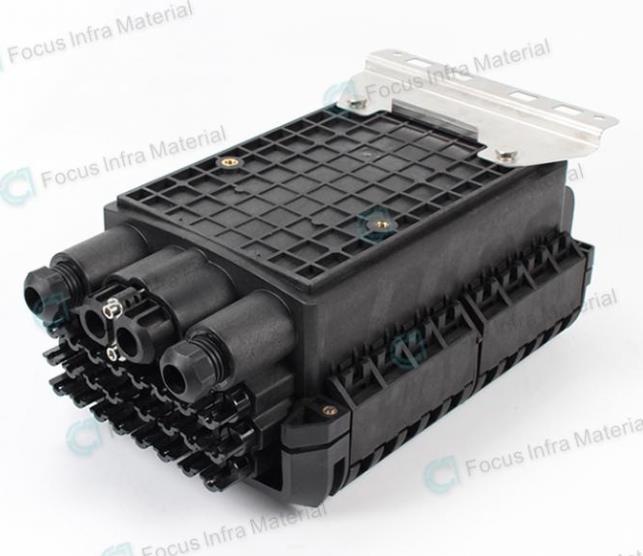Blog
Precautions for optical fiber sleeve welding
Fiber bushing welding is a very important link in fiber communication, which is directly related to the stability of fiber connection and the quality of signal transmission. Note the following points when welding optical fiber bushing:

First, preparation
Equipment Check: Ensure that tools and materials such as the welding machine, cutting knife, wire stripper, alcohol cotton, and heat shrink tubing are available, and that the welding machine is fully powered. Check whether the electrode of the welding machine needs to be replaced, and generally replace the new electrode after discharging more than a certain number of times (such as 2000 times).
Clean environment: Choose a clean, dry, and dust-free working environment to prevent optical fibers from being contaminated during installation. Keep the working area clean and orderly to reduce the influence of external factors on the welding quality.
Fiber pretreatment: Pretreat the fiber by stripping, cutting, melting, and protecting. When removing the outer sheath of the optical fiber, ensure that the optical fiber is not damaged. When cleaning the end face of the optical fiber, gently wipe it with an alcohol cotton to avoid excessive force. When cutting the optical fiber, keep the optical fiber stable and ensure that the end surface is flat and without burrs.
Second, the welding process
Welding machine setting: According to the material and type of optical fiber, set the key parameters such as the optimal pre-melting main melting current and time and the amount of optical fiber feeding on the welding machine. Ensure that the welding machine is in optimal working condition.
Discharge experiment: Discharge experiment is carried out before welding to make the welding machine adapt to the current environment. The discharge times and discharge time should be adjusted according to the actual situation until the discharge is OK. Note that it is not necessary to perform a discharge test before each welding, but it is necessary to perform a discharge test when the position changes more than a certain distance (such as 300KM), the altitude changes more than a certain height (such as 1000M), the electrode is replaced, or the latitude changes greatly.
Optical fiber placement: Put the cut optical fiber into the V-shaped slot of the welding machine, and ensure that the optical fiber end is aligned with the center of the electrode rod. Cover the wind shield and optical fiber platen and begin the welding process. After the welding is complete, enlarged images of the two optical fibers are displayed on the screen to check whether the welding quality is up to standard.
Heat shrink tubing protection: Put the heat shrink tubing over the fused optical fiber, and use a heat gun or the heating device of the welding machine to heat the heat shrink tubing. During the heating process, it is necessary to maintain uniform heating to avoid deformation or burning of the casing caused by local overheating. After the heating is complete, the sleeve should be tightly wrapped around the optical fiber fusion point to protect it.
Third, follow-up inspection and maintenance
Quality check: Use a fiber tester to test the welded fiber to ensure that the signal transmission quality meets the requirements. The inspection contents include attenuation test, return loss test, etc.
Finishing tools: After welding is completed, timely arrange tools and materials, and return them to the designated position. Clean up the work site and keep it clean and orderly.
Regular maintenance: Regular maintenance and maintenance of the welding machine and other tools to ensure that they are in good working condition. Check whether the electrode needs to be replaced, and whether the welding machine needs to be cleaned.
Fourth, precautions
Safe operation: Pay attention to safe operation norms during the whole welding process to avoid electric shock, scalding and other safety accidents. Wear personal protective equipment such as gloves and goggles.
Cleaning and maintenance: Keep the welding machine and other tools clean and dry. Regularly clean the V-groove, electrode, objective lens and other parts of the welding machine, and the blade of the cutting knife and other wearing parts. Be gentle when using anhydrous alcohol or special cleaning agents to avoid damaging equipment or optical fibers.
Standard operation: Perform welding in strict accordance with the operation specifications to avoid deterioration of welding quality or equipment damage due to improper operation. In the operation process, attention should be paid to the details such as the preparation of the optical fiber end face, cutting quality welding parameters, etc., will affect the final welding effect and quality stability.
To sum up, the welding of optical fiber sleeve is a process that requires careful operation and strict control. Only by following the correct operating specifications and paying attention to the above precautions can the welding quality and signal transmission stability be ensured.
Chengdu Focus Infra Materials Co.,Ltd is a global business trading company. The company focused on the field of fiber optical networks and data communications, our products are widely used in telecommunication transmission network systems, wide area networks, FTTH, FTTX, FTTA and security monitoring systems. Products mainly include:heat shrink tubes, cold shrink tubes, joint closures, terminal connector, terminal box, fiber optic splice closure, PLC splitter, fiber pigtail, FTTH accessories.
RELATED NEWS
- Chengdu Focus Infra Materials Company's Fiber Optic Splicing Technology Innovati 2024-11-26
- The function and installation steps of optical fiber connector 2024-11-16
- LSZH Low Smoke Zero Halogen Materials, Something you should know 2024-11-14
- What is a Fiber Optic Splitter 2024-11-13
- What is a Fiber Optic Attenuator 2024-02-26
CATEGORIES
LATEST NEWS
CONTACT US
Contact: Yuki
Phone: +8618981876882
E-mail: yuki.hecy@cdfocusinfra.com
Whatsapp:+8618981876882
Add: No. 1760 century avenue, Chongzhou city, Sichuan province, China
